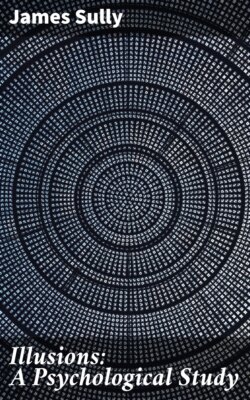Читать книгу Illusions: A Psychological Study - Sully James - Страница 12
ОглавлениеFar more important than these temporary fluctuations of sensibility are the permanent alterations. Excessive fatigue, want of proper nutrition, and certain poisons are well known to be causes of such changes. They appear most commonly under two forms, exalted sensibility, or hyperæsthesia, and depressed sensibility, or anæsthesia. In these conditions flagrant errors are made as to the real magnitude of the causes of the sensations. These variations may occur in normal life to some extent. In fairly good health we experience at times strange exaltations of tactual sensibility, so that a very slight stimulus, such as the contact of the bed-clothes, becomes greatly exaggerated.
In diseased states of the nervous system these variations of sensibility become much more striking. The patient who has hyperæsthesia fears to touch a perfectly smooth surface, or he takes a knock at the door to be a clap of thunder. The hypochondriac may, through an increase of organic sensibility, translate organic sensations as the effect of some living creature gnawing at his vitals. Again, states of anæsthesia lead to odd illusions among the insane. The common supposition that the body is dead, or made of wood or of glass, is clearly referable in part to lowered sensibility of the organism.[32]
It is worth adding, perhaps, that these variations in sensibility give rise not only to sensory but also to motor illusions. To take a homely instance, the last miles of a long walk seem much longer than the first, not only because the sense of fatigue leading us to dwell on the transition of time tends to magnify the apparent duration, but because the fatigued muscles and connected nerves yield a new set of sensations which constitute an exaggerated standard of measurement. A number of optical illusions illustrate the same thing. Our visual sense of direction is determined in part by the feelings accompanying the action of the ocular muscles, and so is closely connected with the perception of movement, which has already been touched on. If an ocular muscle is partially paralyzed it takes a much greater "effort" to effect a given extent of movement than when the muscle is sound. Hence any movement performed by the eye seems exaggerated. Hence, too, in this condition objects are seen in a wrong direction; for the patient reasons that they are where they would seem to be if he had executed a wider movement than he really has. This may easily be proved by asking him to try to seize the object with, his hand. The effect is exaggerated when complete paralysis sets in, and no actual movement occurs in obedience to the impulse from within.[33]
Variations in the condition of the nerve affect not only the degree, but also the quality of the sensation, and this fact gives rise to a new kind of illusion. The curious phenomena of colour-contrast illustrate momentary alterations of sensibility. When, after looking at a green colour for a time, I turn my eye to a grey surface and see this of the complementary rose-red hue, the effect is supposed to be due to a temporary fatigue of the retina in relation to those ingredients of the total light in the second case which answer to the partial light in the first (the green rays).[34]
These momentary modifications of sensibility are of no practical significance, being almost instantly corrected. Other modifications are more permanent. It was found by Himly that when the retina is overexcitable every stimulus is raised in the spectrum scale of colours. Thus, violet becomes red. An exactly opposite effect is observed when the retina is torpid.[35] Certain poisons are known to affect the quality of the colour-impression. Thus, santonin, when taken in any quantity, makes all colourless objects look yellow. Severe pathological disturbances are known to involve, in addition to hyperæsthesia and anæsthesia, what, has been called paræsthesia, that is to say, that condition in which the quality of sensation is greatly changed. Thus, for example, to one in this state all food appears to have a metallic taste, and so on.
If we now glance back at the various groups of illusions just illustrated, we find that they all have this feature in common: they depend on the general mental law that when we have to do with the unfrequent, the unimportant, and therefore unattended to, and the exceptional, we employ the ordinary, the familiar, and the well-known as our standard. Thus, whether we are dealing with sensations that fall below the ordinary limits of our mental experience, or with those which arise in some exceptional state of the organism, we carry the habits formed in the much wider region of average every-day perception with us. In a word, illusion in these cases always arises through what may, figuratively at least, be described as the application of a rule, valid for the majority of cases, to an exceptional case.
In the varieties of illusion just considered, the circumstance that gives the peculiarity to the case thus wrongly interpreted has been referred to the organism. In the illusions to which we now pass, it will be referred to the environment. At the same time, it is plain that there is no very sharp distinction between the two classes. Thus, the visual illusion produced by pressing the eyeball might be regarded not only as the result of the organic law of the "specific energy" of the nerves, but, with almost equal appropriateness, as the consequence of an exceptional state of things in the environment, namely, the pressure of a body on the retina. As I have already observed, the classification here adopted is to be viewed simply as a rough expedient for securing something like a systematic review of the phenomena.
